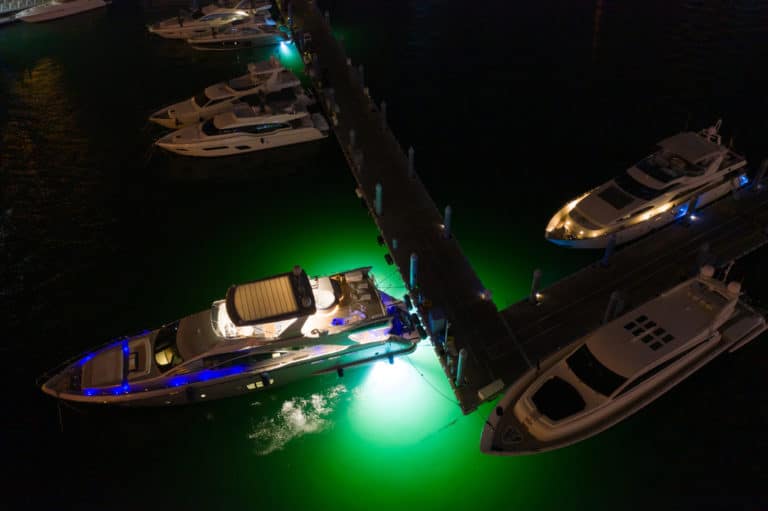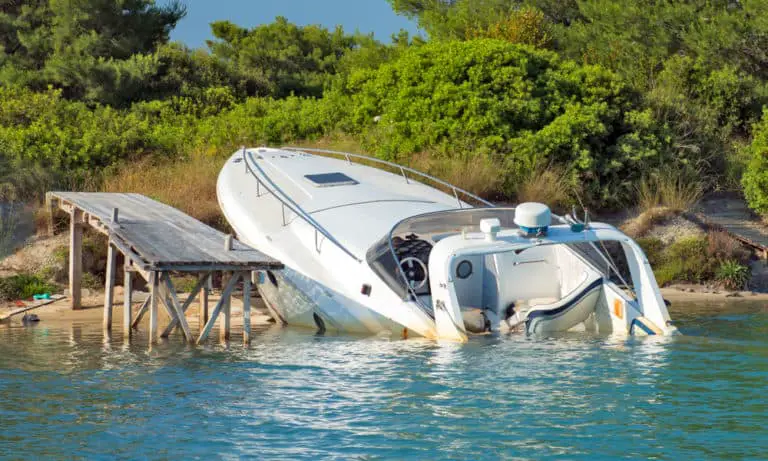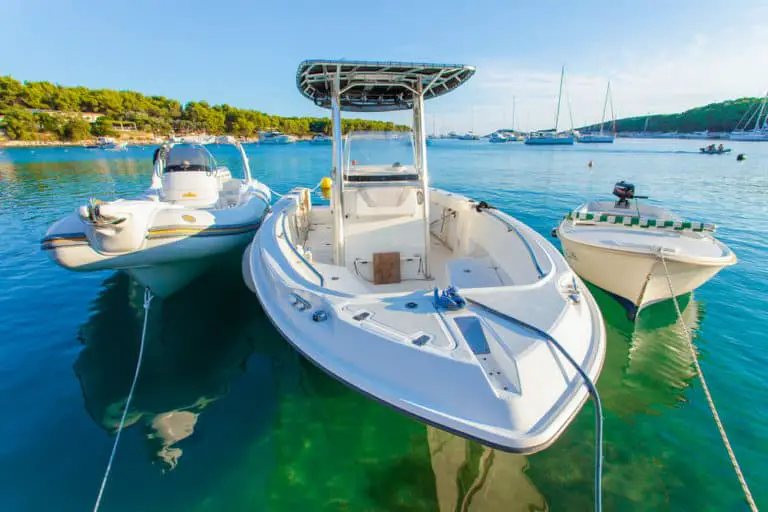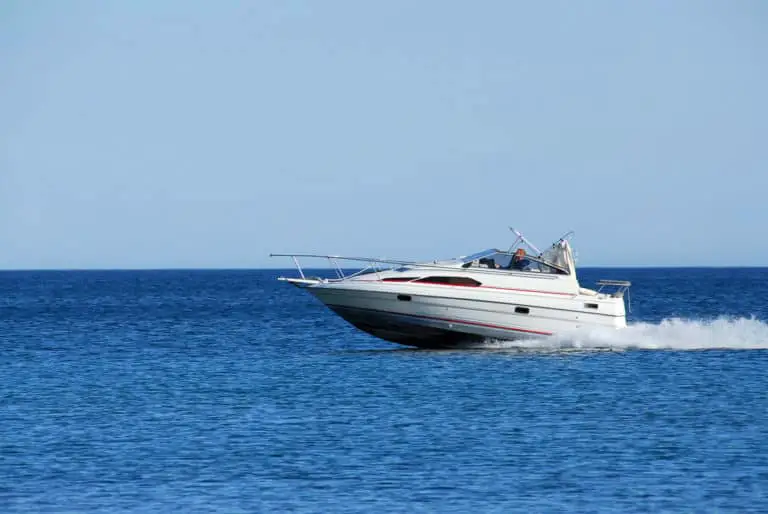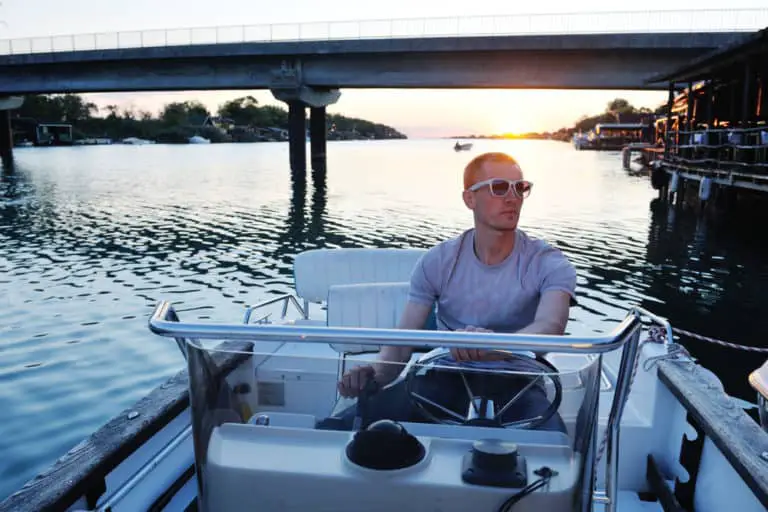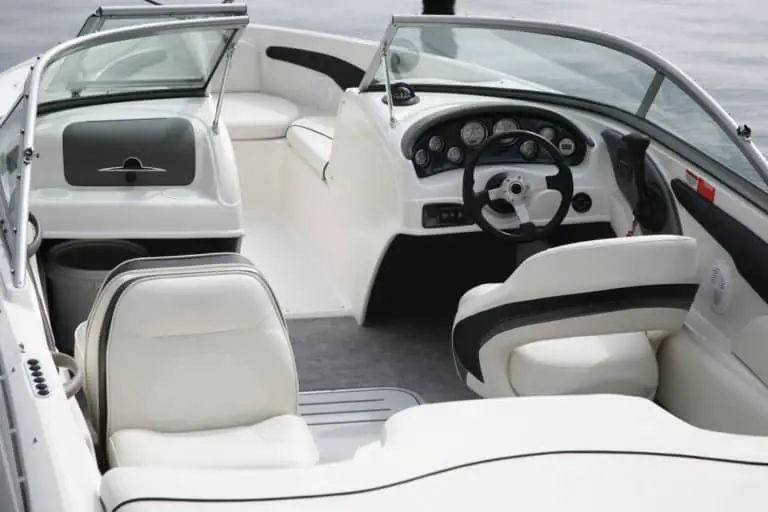15 Tips for Boating at Night [for Safety & Navigation]
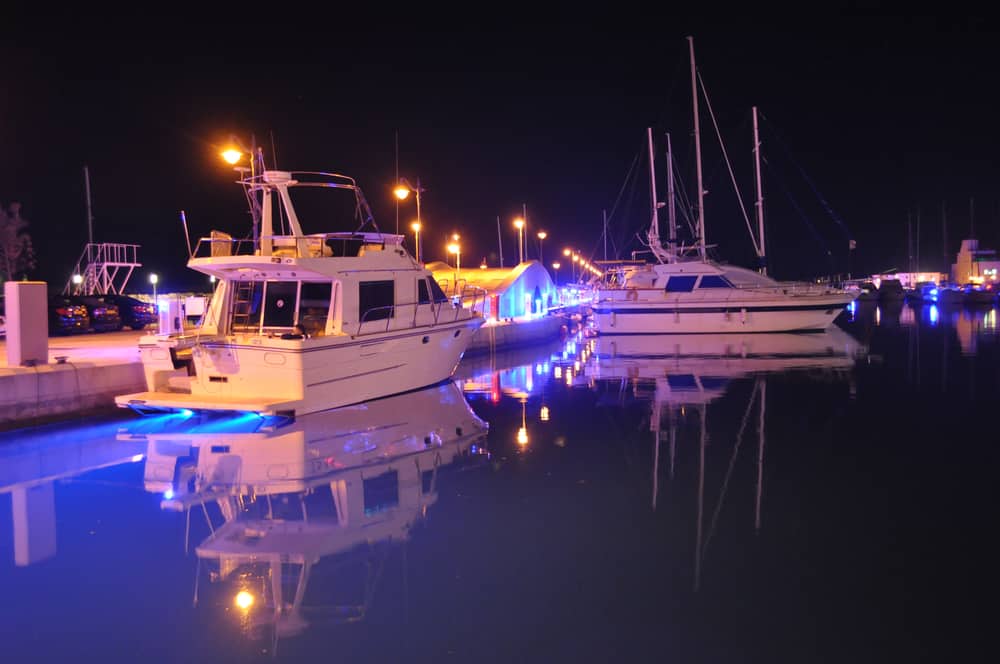
As a new boat owner, one of the activities you may be most excited about is your opportunity to experience boating at night. This activity is rarely enjoyed by those who do not own their own boat, since most rentals often do not allow operation after dark. To enjoy it safely, however, you will need to know how to properly and lawfully operate your vessel at night.
1. Trust Your Navigation Tools
You are (at least, you should be) using relatively accurate digital navigation tools, such as GPS, chart plotters, depth sounders, and more. They should be able to help you measure and navigate effectively while nighttime boating, and you should always consider them with the appropriate weight.
If you are night boating and your instruments indicate you are misdirected, and your eyes tell you something else, you should always second guess your eyes. The water and the dark water in particular can play many different tricks on your eyes, so don’t be afraid to lean on your tools.
Beginners boating at night can easily be involved in a collision or other nighttime boating incident if they are not careful. Many beginners make the mistake of thinking they know better than their digital navigation aids, and this can end up being the reason they mistake a bell buoy for a lighthouse, and possibly put themselves and their vessel in danger.
2. Slow Down
While there are no speed limits on the water, there is an operating standard set by the USCG that the maximum speed is the top speed at which you can still safely operate your vessel. One of the most valuable nighttime boating tips is to slow down or control your overall speed.
Boat speed at night is a crucial part of nighttime boating safety. Since boats do not operate within specific predetermined paths of travel, like cars on roads, there is a constant chance that you may encounter another vessel traveling in any conceivable direction. If this meeting happens at higher speeds, it could be disastrous, since nighttime navigation is much more complicated.
You should also keep your boat speed capped to a relatively modest speed at night since your night vision can be affected by any other strong light on the water or in your cabin. This can disorient or even blind you for a time, and if you are traveling at too high of a rate of speed it could mean a collision or be run aground.
3. Use Spotlights and Searchlights Appropriately
Another of the best tips for nighttime boating for beginners is that spotlights and searchlights should not be used as frequently as you may think. It is a surprisingly common mistake for new boaters to immediately shine powerful lights on other vessels they encounter at night. This is not only unnecessary, but it can create incredibly dangerous situations.
Boats aren’t equipped with the same type of navigational lights as cars. They don’t have headlights because the reflective nature of water makes them relatively ineffective, and when they sweep across another boater, they can hamper the operator’s night vision for several minutes. This can render them unable to avoid collisions and more.
While your navigation boating lights should be on at all times when required, they should also be the only lights that are in operation during that time aside from lights on your dash or in your wheelhouse. There are additional docking lights that may be used, but they should only be used when docking, and only when in close proximity to the dock.
4. Get a Night Vision Device
One of the obvious and most challenging things about boating at night is the inability to rely on visual identification of vessels, areas, and more. When boating at night, your vision becomes accustomed to operating in low-light conditions and you will see your night vision become more useful.
The problem is, any time you look at something that causes your pupils to constrict, even the smallest LED or digital display, your night vision can be hampered for several minutes. This can be fatal in a situation where you need to be able to rely on your vision, like an emergency or in close proximity to land or another vessel.
Getting a reliable light amplification monocular can be an absolute game-changer for those who struggle with regaining their night vision even after only small exposures to dim light. These devices will gather in light from ambient lights at night, or use other types of light amplification technology to give you a black & white, or black & green night vision image.
5. Learn the Navigation Lights
US Coast Guard sets requirements for the navigation lights on boats that are required when operating at night. Not only do these lights help identify other vessels on the water, but understanding what the light requirements are can also help the operator to know what kind of vessel it is, what it may be doing, as well as a rough direction of travel.
Knowing what vessels are out there, what direction they’re heading, and what activity they may be engaged in can help keep you, your passengers, and even your entire vessel safe from potentially catastrophic harm.
For example, if you see two boats that look like they are sufficiently ar apart for you to pass between can be perfectly safe unless they have three white masthead lights in a vertical line. In this case, passing between them could be deadly, since the boat in front is towing the one in the rear. Understanding how the navigation lights are used to signify what size vessel and what it’s doing is one of the most valuable tips for boating at night.
6. Learn the Navigation Sounds
In addition to setting the regulations and standards for the requirements of boat lights at night, the US Coast Guard has also standardized the issuance and acknowledgment of navigation audio signals. These sound signals consist of either whistle or horn blasts, in varied durations and combinations, being used to communicate the intent of one captain to another.
For example, in a pitch-black navigation or shipping channel, one boat is closing the distance to another boat traveling in the same direction. To indicate their intent to overtake the slower vessel, the faster vessel sounds two long blasts and two short blasts on their horn, indicating that they will overtake the slower vessel on the slower vessel’s port side. If the slower vessel agrees, they sound the same signal.
7. Post a Non-Captain Lookout
This is crucial for any boat carrying more than just its operator. During the day, the captain or operator of the vessel has sufficient light and environmental safety to be able to manage both the safe operation and monitoring of the ship, as well as the required safety lookout duties. The high visibility distance allows the opportunity to look away periodically in order to multitask further.
While boating at night, the operator should be sure that a full-time dedicated lookout is posted to assist with safe nighttime navigation. This will reduce the risk of the captain missing something or neglecting the readings on the gauges or chart plotter. The captain is simply not capable of being a lookout with the appropriate dedication.
This also will allow the captain to take immediate action the very moment that a problem is voiced to them. If they are busy trying to be a lookout as well as captain at night, there is a good chance they will not be standing at the wheel at the time.
8. Turn Down the Ambient Light
Your night vision is going to be absolutely vital to your night boating success and ongoing safety. You gain better night vision after going for a period of time with no illumination strong enough to force the constriction of the pupils. They dilate wide in the dark in order to take in as much light as possible, and if there is too much ambient light, it can sabotage your night vision significantly.
Make sure you dim all ambient lights, screens, indicators, and so on. Even your VHF radio, if it has a backlight function, should be turned nearly all the way down, so that if a random signal comes in, it doesn’t light up your whole cabin and ruin your night vision for the next 5 minutes. Bring a towel to drape over electronics and lights that you do need periodically, and some electrical tape for lights you absolutely do not need and cannot turn off.
9. Prepare the Safety Gear
Just like with any other maritime outing, you will need to make sure you have all of the legally required safety equipment, as well as additional items that may be useful during nighttime emergencies. The requirements are determined by the length of your vessel, and apply to things like PFDs, extinguishers, and so on.
There will be a required number of personal floatation devices, which can be lifejackets or even floating seat cushions. You will be required to have a minimum number of fire extinguishers unless your vessel is relatively small and has a fixed suppression system. There are also requirements for the number and type of emergency signaling devices that you must have on board.
The most important types of these will be the nighttime SOS signaling light, and the night-use flares or pyrotechnic devices. These are incredibly important as they are going to be the most visible signaling devices at night, and will have the greatest range.
10. Listen to Your Surroundings
If you are a beginner boating at night one of the most useful things you can do now and again is to shut everything down, and listen. Sound carries surprisingly well on the open water, especially at night when the water tends to be much calmer, and whistles, horns, and engines can often be heard for a large distance around. You may be amazed at how much you can suddenly hear when your eyes aren’t being overstimulated.
Many newer boaters may not be entirely comfortable taking their own vessel out for night boating right away, which is understandable as it can feel a little daunting.
If you fall into this category, see if one of your boating friends or members of your boating club would be willing to take you out for a night trip or two before you build the confidence to take your own boat out. This can help you to develop your listening skills before you have to put them to the test.
11. Take Extra Caution Around Boat Docks
Judging distances while boating at night is one of the most challenging things about nighttime operation overall. You might see a light on the water that looks like it’s miles away, but you close the distance quickly and see that it’s only a small cruiser. Or sometimes you see a light that looks like it is too close for comfort, only to find out when you reach them on VHF that they are nearly 2 miles away.
This effect carries over into the docking process as well. Tying up to a dock can be difficult enough for newer boaters during the daylight hours, and those difficulties get a force multiplier at night. Overhead lights making sharp, stark shadows. Low light levels in general presenting a challenge for your eyes that have been soaking up the night for hours. Be incredibly careful when docking at night, and be sure to use only the smallest nudges to the throttle.
12. Pack Warm Clothing
Boating at night is so incredibly different from daytime boating, that many people do not even think about the temperature change. Even if it was in the 90s during the day while you were on the deck setting hooks or soaking up some rays, when the sun goes down it can get chilly fast.
Be sure you have brought along sufficient clothing to adjust to the lower temps at night. It is not uncommon for the air temperature to drop 20-40 degrees once the sun isn’t beating down on you.
13. Prepare the Nighttime Boating Gear
In addition to lights on boats, there are several pieces of safety gear that you should keep on hand when boating at night.
Make sure you have:
- GPS/chartplotter
- Sound-signaling device (easily accessible)
- VHF radio
- Flares
- Signal lights and whistles tied to each life jacket
- Communication devices
Even though you may not be able to get service when you’re out on the water, it’s important to keep your cell phone on you at all times. If there is an emergency or you need to contact anyone when you have signal again
A spotlight, flares, and glowsticks can all be helpful as well. If you end up using your spotlight, be careful so that you don’t blind other boaters.
Also, it is crucial that you have appropriately size life jackets for each passenger on your boat.
14. Avoid Stargazing if Possible
Being out on the open water at night, especially with a clear sky, is a unique experience, but one of the most important night boating tips is to avoid stargazing while your boat is moving.
Not only can this be disorienting, but it can also lead to vertigo and seasickness.
If you want to map the stars or stargaze, that’s perfectly fine, just be sure to do it when the boat is still to avoid dizziness, disorientation, and sickness.
Looking up at the stars can be a truly beautiful experience, but it is best done while the boat is anchored so you can really enjoy the view.
With the lack of light pollution out on the water, you can see the stars much more clearly, so stargazing is tempting.
If you do catch yourself glancing at the stars on a clear night, make sure you only look for a few seconds at a time while the vessel is in motion to avoid any discomfort.
15. Always Stay Alert
Keeping an eye out on your surroundings during the day is easy, as long as the weather is fairly clear. At night, however, it is a different story.
When you’re out on the water at night, you need to ensure you’re maintaining speeds that are safe for the conditions because challenges can pop up with minimal warning.
Rough water and the wake from other boats are some of the surface hazards, but there’s also the risk of hitting rocks and other obstacles below the surface. Ideally, you would have a lookout person onboard with you to help keep an eye on things.
While underwater hazards should be monitored, it’s more important to pay attention to the surface. Scan ahead of you for other watercraft, including canoes and kayaks. Many people enjoy nighttime water sports with no light, so it’s crucial to keep your eyes peeled for other boats on the water.
FAQ
Is it safe to boat at night?
There are dangers that are present when boating at night, but as long as you are careful and have safety equipment, things should go smoothly.
What do you need for night boating?
Before you head out on your boat after dark, make sure you have all of the necessary safety equipment, as well as a boat spotlight.
Can you be on a boat after dark?
Boating at night is an activity that many people love. You can be on a boat after dark, you just need to follow night boating safety rules.
Can you put headlights on a boat?
While boat headlights may seem like a good idea, but they are not allowed. You can have a light for docking at night, but not boating.
What do 3 short blasts of a boat horn mean?
3 short blasts of a horn mean the boat is backing up. The 3 blasts are sounded when a dock is being departed in reverse.
How do you pass a boat at night?
If two boats are in a head-on meeting, both red and green lights will be visible. Boats should always pass each other on the port side.
Why do boats use red lights at night?
There are several colored lights boats display at night. Red lights are used to indicate a vessel’s port side, letting other boats know what is ahead.
What light must be shown when a powerboat is operating at night?
At night, all powerboats have to display their red and green navigation lights and either an all-around light or both a masthead and a sternlight.
What you must do when anchoring at night?
When you anchor at night, it is crucial that you display your all-around light to indicate to other boats where you are positioned.
What lights do you need to boat at night?
At night, boats must display their navigation lights. This includes their red and green side navigation as well as their masthead light.
How fast can you drive a boat at night?
The laws vary from state to state, but at night you can go between 15 mph and 30 mph, depending on where you are.

